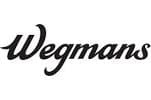Wegmans

| Rating |  |
| Farm/Brand Headquarters | Rochester, NY |
| Products | Fluid milk |
| Website | www.wegmans.com |
| Market Area | NY, PA, NJ, VA, MD |
| Total Score | 0 |
This brand is known or suspected to be practicing outside the letter and the intent of organic rules and regulations. They were the least transparent in Cornucopia’s investigation and information was difficult to confirm outside of their participation. Brands like this one may damage the organic marketplace as a whole by undermining confidence in the label and pushing ethical farms out of the industry.
We recommend you try to find another source for your organic milk—though even this “organic” milk will have superior qualities to conventional milk (which would rate a “0” on our scoring scale). Even low-quality organic milk has been shown to contain no residues of antibiotics, and toxic pesticides, while the risk of those residues being present in conventional milk is high.
| Criteria | Points | Comment |
|---|---|---|
| TOTAL (possible score is 1600 plus extra credit) | 0 | 1-Cow Rating | Poor  |
|
Farmstead dairies earn the most points. Corporations that have a history of skirting the organic rules receive the fewest. Ownership structure | 0 | Privately held |
|
Farms that produce 100% of their milk receive the most points. Milk from "open market" or known confinement dairies receive the fewest. Milk Supply | 0 | Previously had milk of integrity but brand did not participate in new survey |
|
100% organic farms receive the most points. Split operations with conventional dairy on the same property receive the fewest. Organic Production | 0 | Unknown if operations are mixed |
|
Farms that completed the survey in detail received the most points.
Disclosure of Information for Verification | 0 | Did not participate; poor transparency |
|
Points determined by integrity of the brand’s organic certifier. Organic Certification | 0 | CCOF |
|
Animal Welfare Approved and Biodynamic certifications receive the most bonus points. Producers are not penalized for not having additional certifications beyond organic. Other Labels/Standards | 0 | No answer |
|
100% grass-fed with independent verification of standards Grass-fed | 0 | Previous survey showed minimum standards met |
|
No points are given for this but the information may be useful to certain consumers looking to avoid soy. Soy Free Ration? | 0 | No answer. Soy is likely used in feed. |
|
Sliding scale based on policies, enforcement, acreage/cow, days/year on pasture, and permissible exemption. Pasture | 0 | Previous survey showed minimum standards met |
|
One time/day receives the most points. Two times per day is standard. Times Milked | 0 | Likely twice a day (standard) |
|
Lower cull rate scores better, with under 10% receiving the most points. Cull/death Rate | 0 | Unknown; previous survey showed low cull rates |
|
Farms with closed herds receive the most points. Farms that sell organic calves and buy conventional replacements receive the fewest. Replacements | 0 | Previous survet showed closed herds |
|
Standard practice is removing calves shortly after birth, with extra points given for unique ways of managing calves
Calves | 0 | No answer |
|
Farms that prohibit antibiotics receive the most points. Farms that allow young stock to receive antibiotics (under one year), receive the fewest.
Antibiotic Use | 0 | Previous survey noted no antibiotic use |
|
No hormones is the standard, however some farms do use oxytocin for therapeutic purposes. Hormone Usage | 0 | Previous survey noted no hormone use |
|
Farmstead dairies (owner lives on-site) receive the most points. Fewer points are given as oversight declines. Farm Support | 0 | Dairies used to be visited regularly by supplier staff |
|
All ingredients sourced from inside the organization or on the farm receives the highest points. Ingredients from confinement factory farms and/or imported ingredients receive the fewest. Procurement of Ingredients | 0 | Milk powder used, source unknown |
|
Various levels of extra credit given for 1) providing full organic systems plan, 2) providing details on all farms (multi-farm brands, details on largest five required), and 3) sourcing feed on-farm or domestically. Extra Credit | 0 | None |

